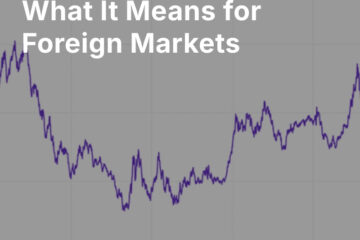The Case for Emerging-Market Assets
We are getting more bullish on EM.
We have been bullish on certain emerging-market assets since earlier this year, particularly Brazilian bonds. We viewed them as a reversion-to-the-mean trade as commodity prices stabilized and Brazil found its way to the resolution of its long-running political crises. In U.S. dollar terms, emerging-market bonds have performed well, as of this writing up more than 15% year-to-date. (We have used illustrative U.S.-traded ETFs for both bonds and equities). Emerging-market equities have not been left out of the rally, as of this writing up more than 16% year-to-date. (The previous 5 years were not so rosy — down nearly 18% for EM stocks and 19% for bonds.)

Source: Bloomberg

Source: Bloomberg
In comparison, 10-year U.S. Treasuries’ total return so far in 2016 has been about 8%, while U.S. stocks have returned about 7% including dividends as of this writing.
While we would still be tactical allocators in emerging markets, to particular countries, industries, and instruments, we can point out some of the overall advantages that EM assets enjoy under current conditions.
First and foremost, while developed-market equity valuations are stretched, EM valuations are reasonable, both compared to their own history and compared to developed markets’. The chart below shows historical CAPE (cyclically adjusted price-to-earnings) ratios for various world markets. (CAPE ratios smooth earnings by averaging inflation-adjusted earnings over a 10-year period.)
Source: Source Multi-Asset Research
Emerging markets are below their long-term CAPE ratio, while the U.S. is slightly above it. This makes sense, given the post-crisis underperformance of emerging-market equities, which in U.S. dollar terms have been treading water since 2009.

Source: Bloomberg
Near the beginning of that period of underperformance, EM CAPE ratios were high — 24.6 at the end of 2010, versus 21.5 for the U.S. at the same time. In short, the post-crisis period has set up a broad reversion-to-the-mean story for emerging markets. Historical analysis suggests that with EM valuations low and U.S. valuations higher, the next five years may see corresponding EM outperformance.
There are several risks to this view. One is posed by commodities. EM currencies correlate fairly closely to commodity prices, so EM equity outperformance in U.S. dollar terms depends on the accuracy of the thesis that commodity prices have indeed stabilized. A second risk is posed by Fed tightening. The ultimate global effects of the Fed’s coming rate rises are unclear, but historical analysis suggests at least that EM currencies generally do not fall during rate-hike periods.
A third risk is posed by China, since a significant Chinese slowdown would affect both commodity exporters and manufacturers in the emerging world. Our regular readers know that while we think problems are in store for China, we don’t believe they will boil over for another two to four years. The Chinese authorities have apparently given up on a gradual deflation of their leverage bubble, and are letting it continue until it bursts. When that happens, it will be an event of global economic significance, because of the slowdown in demand growth that a Chinese recession could cause. But once again, while such a crisis is taking shape, we do not believe it is imminent.
Investment implications: After years of underperformance, emerging-market assets may be poised to continue the outperformance they’ve shown in 2016 thus far. Although risks are still posed by commodities and by the eventual popping of China’s bubbles, EM valuations are attractive — below the average of their long-term history. If history is a guide, EM assets may be at the beginning of a longer-term reversion-to-the-mean trend.


